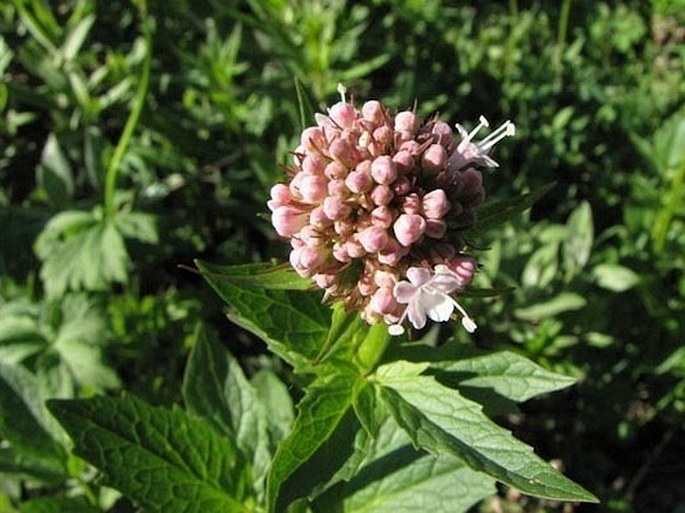Family: Valerianaceae Batsch

Distribution: Species of the west of North America, from Alaska, Canadian provinces of Alberta, British Columbia, Yukon Territory and Northwest Territories, through states of Washington, Idaho, Montana, Oregon and into northern California.
Ecology: Moist montane and subalpine forests and their margins in elevations from 1100 to 2500 m. Blooms in June and July.

Description: Perennial herb growing from a scented rhizome with fibrous roots. Erect stems 30–120 cm tall, hairless. Leaves are opposite, pinnatifid, 10–15 cm long, 3–7 cm wide, divided into 3–7 leaflets, 3–5 cm long; basal leaves, when present, stalked and divided into 3–5 segments; all leaves mostly coarsely toothed. Inflorescence is a panicle of cymes, flowers pinkish white, funnel-shaped, 5–8 mm long with bristle-like sepals, petals with rounded tips, pentamerous, stamens 3, protruding, pistil 1. Fruit is an achene, ribbed, hairless, 3–6 mm long, 2–2.5 mm wide, tipped with feathery hairs.
Usage: Modern day herbalists prescribe valerian to treat nervous disorders. Valerian root lowers blood pressure and it is used as sleeping medicine.



These images were taken in Canada, Alberta, Plateau Mountain (July 2011).


